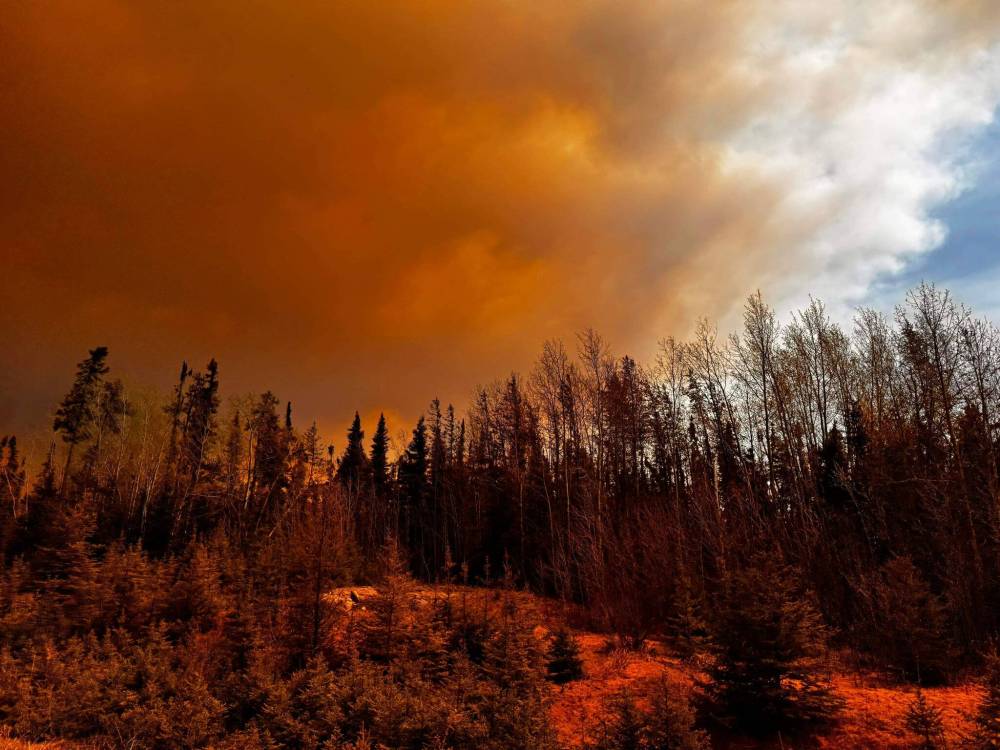Welcome to wildfire season
Advertisement
Read this article for free:
or
Already have an account? Log in here »
To continue reading, please subscribe:
Monthly Digital Subscription
$1 per week for 24 weeks*
- Enjoy unlimited reading on winnipegfreepress.com
- Read the E-Edition, our digital replica newspaper
- Access News Break, our award-winning app
- Play interactive puzzles
*Billed as $4.00 plus GST every four weeks. After 24 weeks, price increases to the regular rate of $19.00 plus GST every four weeks. Offer available to new and qualified returning subscribers only. Cancel any time.
Monthly Digital Subscription
$4.75/week*
- Enjoy unlimited reading on winnipegfreepress.com
- Read the E-Edition, our digital replica newspaper
- Access News Break, our award-winning app
- Play interactive puzzles
*Billed as $19 plus GST every four weeks. Cancel any time.
To continue reading, please subscribe:
Add Winnipeg Free Press access to your Brandon Sun subscription for only
$1 for the first 4 weeks*
*$1 will be added to your next bill. After your 4 weeks access is complete your rate will increase by $0.00 a X percent off the regular rate.
Read unlimited articles for free today:
or
Already have an account? Log in here »
Hey there, time traveller!
This article was published 17/05/2024 (481 days ago), so information in it may no longer be current.
Too soon?
That’s probably what many Manitobans were thinking last week when heavy smoke enveloped much of the province, the byproduct of massive northern wildfires that prompted an abrupt evacuation of the community of Cranberry Portage as flames raged less than two kilometres away.
The third week of May seems too early in the warm-weather seasons for the onset of what is now, lamentably, commonly referred to as “wildfire season.” It’s too soon for the massive, out-of-control blazes, too soon for the evacuations, devastation and associated heartache and stress, too soon for the dense grey haze and acrid smoky smells to sully the brilliant blue skies and reduce the semblance of a scintillant summer sun to little more than a muted reddish orb.

NEENA LUNDIE PHOTO
Forest fire season is starting even earlier.
And yet, here we are — the car trunks, tents and trailers haven’t even been packed up for the customary May long weekend kickoff of outdoor-fun season, and already the great outdoors are in an advanced state of choking, smoke-blanketed siege.
We all knew it was coming, of course. Summers of late, in this country, across the continent and, indeed, around the world, have been marked by ever-larger and ever-more-plentiful fires that have laid waste to huge swaths of wilderness and consumed numerous communities which, owing to a combination of geographic and meteorological misfortune, found themselves in the path of unstoppable conflagration.
Some such fires are caused naturally, mostly by lightning strikes during thunderstorms, while others result from the carelessness or negligence of humans whose recreational yearnings inspire them to venture into tinder-dry forests. But the conditions that make these disasters possible and more calamitously common have, to a great extent, been created by climate change — higher temperatures and lingering droughts that leave wilderness areas parched and prone to rapid wildfire spread; more frequent and extreme lightning storms, sustained high winds capable of propelling huge, cascading walls of flame across the vulnerable landscape.
From Fort McMurray to Malibu, from Cranberry Portage to Lahaina to the mountains of New South Wales, recent history is filled with horrifying stories and images of fires gone wild and communities reduced to charred ruins.
A fortunate few of those forced to flee have been able to return to homes which, thanks to heroic mitigation efforts, favourable weather shifts or just plain good luck, have been spared. But a great many venture back into the blackened landscape only to find all has been lost, and are forced to consider the difficult question of whether to rebuild in the fire zone and hope for the best or leave it behind and start over somewhere else.
Sadly, those are the choices with which we are left. Fire prevention and mitigation efforts can play a small part in limiting the carnage caused by wildfires whose ubiquity is such that they are now deemed to have their own season, but the simple fact of the matter is that the conditions that led to 2023 — in which 15 million hectares of wilderness burned — being named Canada’s worst-ever year for fires are now the realities we face.
There’s little doubt 2024 — which federal government officials last week described as having the potential for an “explosive” wildfire season — will supplant 2023 atop the worst-ever list, and that 2025 will then take its own run at earning the dubious title.
The summer that awaits us after this May-long welcome is destined to be filled with red-shrouded suns and hazy skies.
And while the early arrival of blinding billows might prompt moans of “too soon,” the sad truth of the causal climate-change crisis is that actually, it’s too late.


